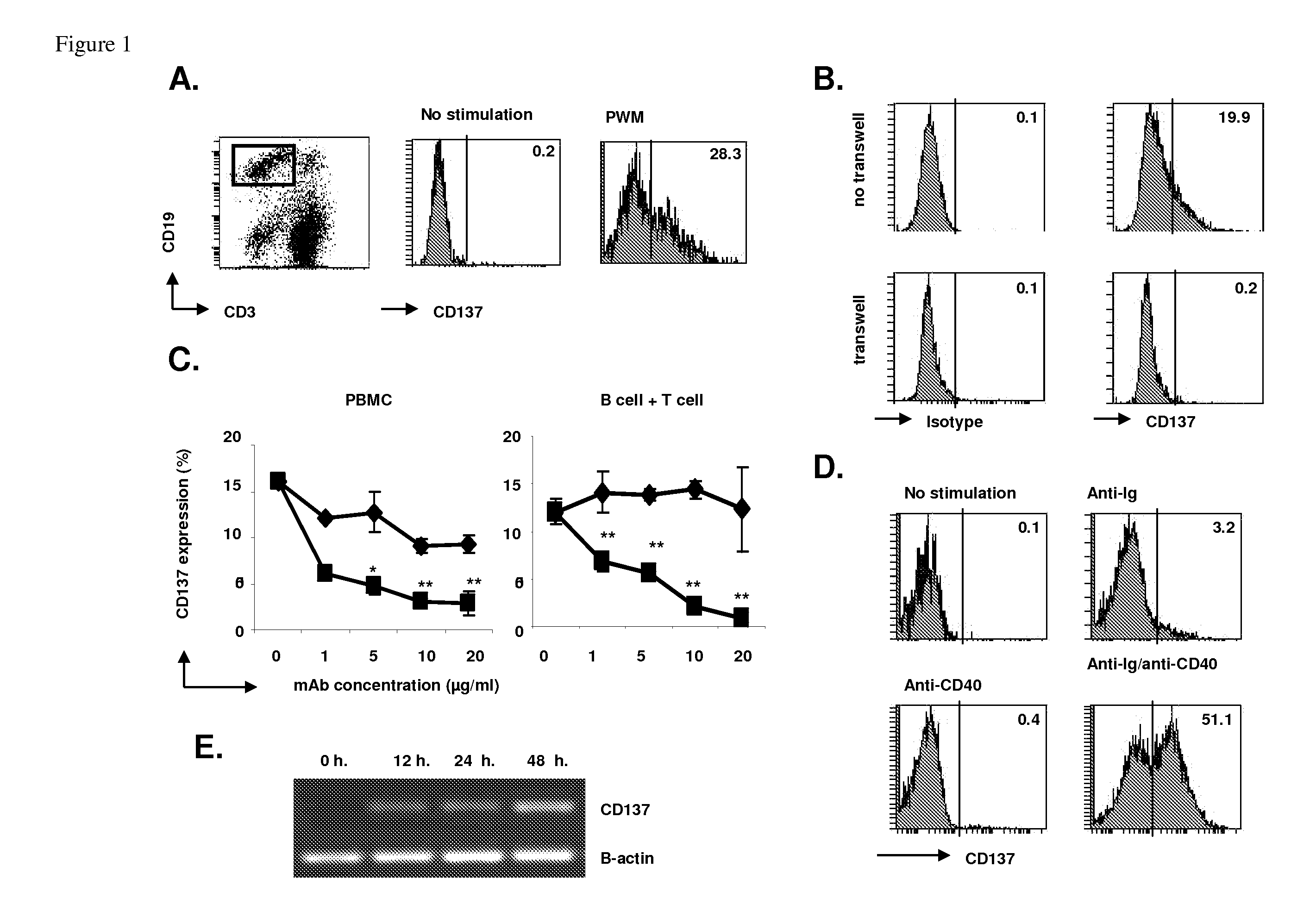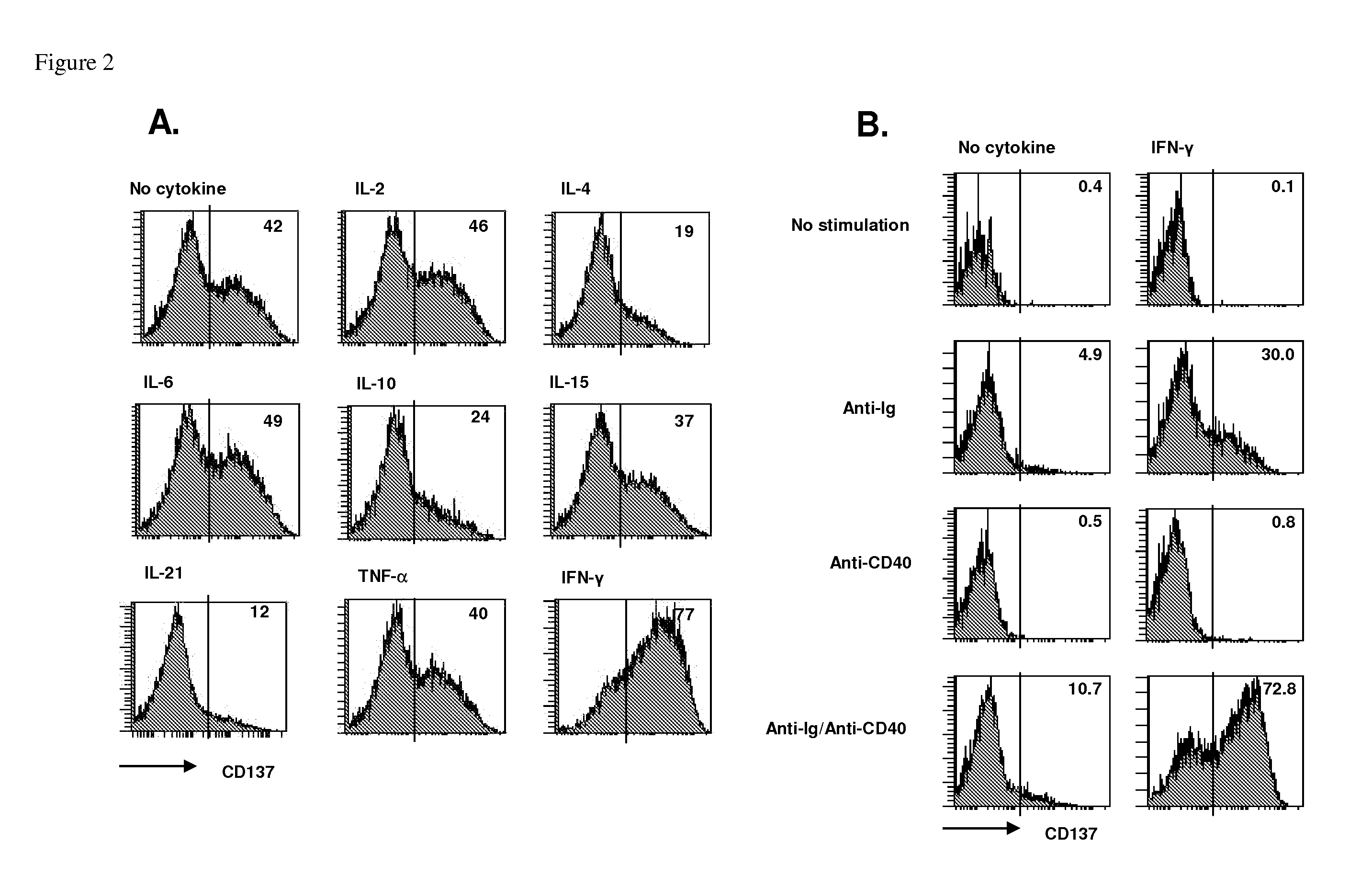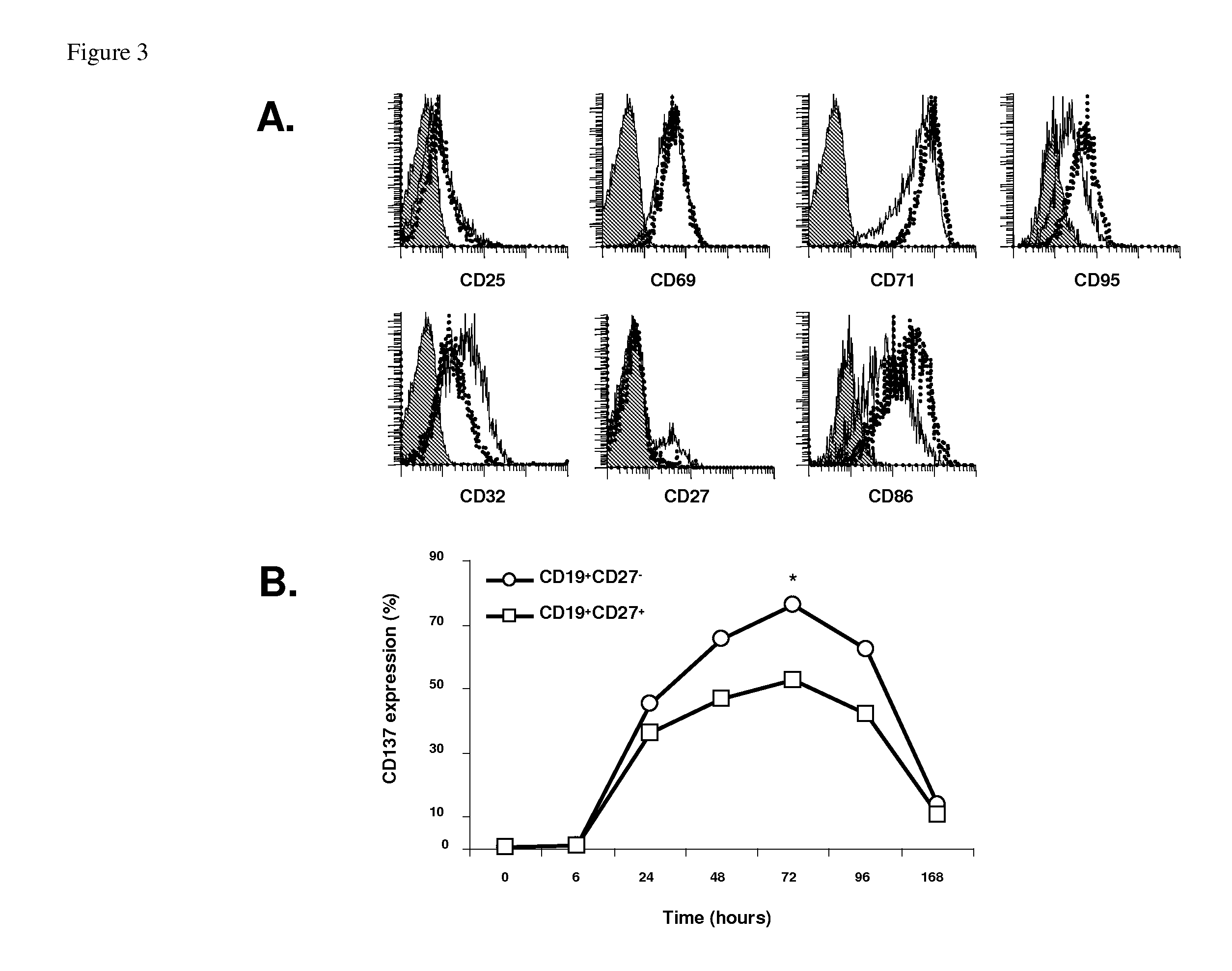Methods for treating cancers and diseases associated with 4-1bb (CD137) expression
a cancer and expression technology, applied in the field of 41bb (cd137) expression treatment methods, can solve the problems of uncertainty as to whether murine-based animal models accurately predict clinical response to 4-1bb manipulation, and achieve the effects of inhibiting the proliferation of b lymphocytes, promoting and promoting the survival of b lymphocytes
- Summary
- Abstract
- Description
- Claims
- Application Information
AI Technical Summary
Benefits of technology
Problems solved by technology
Method used
Image
Examples
example 1
1. Cell Preparation
[0140]Buffy coats from healthy donors were purchased (Biological Specialty Corporation, Colmar, Pa.) and peripheral blood mononuclear cells (PBMC) were prepared by density centrifugation (Ficoll-Paque, Amersham). B lymphocytes were purified from PBMC by negative selection using B cell isolation kit II (Miltenyi Biotec, Auburn, Calif.) and T lymphocytes were purified by positive selection using CD3 microbeads (Miltenyi Biotec) according to the manufacturer's instructions. Purity of cell separations were typically >98% for B and T lymphocytes with less than 0.2% contamination of CD3+ T cells in purified B cell populations (as assessed by flow cytometry). For the isolation of naïve and memory B cell subsets, CD19+ cells were positively selected using a CD19 multisort kit (Miltenyi Biotec), followed by separation of CD19+CD27+ and CD19+CD27− cell subsets using CD27 microbeads (Miltenyi Biotec) according to the manufacturer's instructions.
2. B Cell Activation
[0141]All ...
example 2
4-1BB Expression on Human B Cells Following Antigen Exposure and Expression is Regulated by Cognate Interactions Between CD40-CD40L and Pro-Inflammatory Cytokines
[0155]To initially characterize activating signals required to induce expression of 4-1BB on human B cells, whole PBMC were stimulated with various mitogenic stimuli. Human B cells were found to up-regulate 4-1BB in the presence of PWM (FIG. 1A) while stimulation with PMA, PHA, LPS, PMA / Ionomycin or CpG were not effective (data not shown). Histograms in FIG. 1A indicate percentage 4-1BB expression on gated B (CD19+) cells in whole PBMC. Data are representative of at least 5 individual experiments.
[0156]Because PWM is recognized to activate both T cells and B cells, we next sought to determine if 4-1BB expression on human B cells is T cell-dependent. We observed that purified B cells did not up-regulate 4-1BB in the presence of PWM (data not shown). However, PWM stimulation of cultures containing isolated T cells and B cells...
example 3
4-1BB is Preferentially Expressed on Activated B Cells of Naïve Origin
[0159]As a first step in characterizing the function of 4-1BB on human B cells, the cell surface phenotype of 4-1BB+ and 4-1BB− B cells were compared. Anti-Ig / anti-CD40 stimulated 4-1BB+ B cells demonstrated elevated levels of CD71, CD86, and CD95 but diminished expression of CD32 (FIG. 3A). Interestingly, while 4-1BB− B cells expressed small amounts of CD27, this marker was virtually absent on 4-1BB+ B cells. Since CD27 distinguishes naïve B cells (CD19+CD27−) from memory B cells (CD19+CD27+), we evaluated if 4-1BB was differentially up-regulated on cells originating from these distinct populations. Naïve and memory B cells were purified based on their levels of CD27 expression, cultured in the presence of anti-Ig / anti-CD40, and harvested at defined time intervals. In both cell populations, 4-1BB expression was present on day one and maintained at semi-consistent levels for four days. By day seven, the expression...
PUM
| Property | Measurement | Unit |
|---|---|---|
| concentrations | aaaaa | aaaaa |
| purity | aaaaa | aaaaa |
| selective affinity | aaaaa | aaaaa |
Abstract
Description
Claims
Application Information
 Login to View More
Login to View More - R&D
- Intellectual Property
- Life Sciences
- Materials
- Tech Scout
- Unparalleled Data Quality
- Higher Quality Content
- 60% Fewer Hallucinations
Browse by: Latest US Patents, China's latest patents, Technical Efficacy Thesaurus, Application Domain, Technology Topic, Popular Technical Reports.
© 2025 PatSnap. All rights reserved.Legal|Privacy policy|Modern Slavery Act Transparency Statement|Sitemap|About US| Contact US: help@patsnap.com



